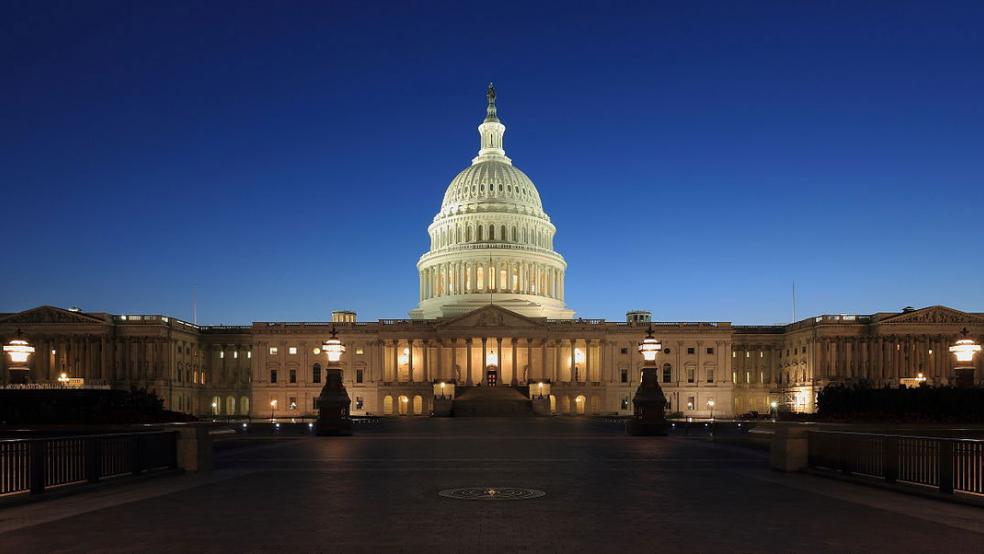Deficit hawks have plenty to worry about these days. The Trump administration and the Republican-controlled Congress are pushing for deep tax cuts, huge increases in defense spending, the construction of an expensive wall along the Mexican border and other projects that will almost certainly push the national debt well above $20 trillion in the coming years.
And as U.S. Comptroller General Gene L. Dodaro, who directs the Government Accountability Office, warned the House Budget Committee last week, huge overpayments for Medicare, Medicaid and Earned Income Tax Credits have emerged as a major fiscal challenge that last year alone cost the Treasury $144.3 billion.
Related: Want to Slash the Deficit? Stop the Billions in Improper Government Payments
To make matters worse, the GAO says there are plenty of other major programs feeling a financial crunch that could pose long-term challenges to the nation’s fiscal stability.
Here are three of the programs the GAO is most worried about:
1. The Pension Benefit Guaranty Corporation
The Pension Benefit Guaranty Corporation was created in 1974 to underwrite and perpetuate voluntary private defined pension plans, the forerunners of less costly 401(k) plans. The quasi-public corporation is largely funded with insurance premiums paid by sponsors, investment income and the assets held by pension plans it takes over.
PBGC insures the pension benefits of American workers and retirees who participate in nearly 24,000 private-sector defined benefit plans. PBGC pays monthly retirement benefits to about 826,000 retirees of 4,700 terminated defined benefit pension plans.
PBGC boasts of one of the largest financial portfolios of any federal government corporation, with nearly $100 billion in assets. Yet the organization is on the GAO’s “high risk” list because its financial future is so shaky – largely because of the steady decline in the number and health of traditional defined benefit pension plans.
Related: The Problem with Low-Income Tax Credits: Billions in Improper Payments
Since fiscal year 2013, PBGC's financial deficits have grown dramatically. At the end of fiscal year 2016, PBGC's net accumulated financial deficit was $79.4 billion — an increase of about $43.7 billion from the end of fiscal year 2013 — and PBGC estimated that its exposure to future losses for underfunded plans was nearly $243 billion.
A federal bailout may be necessary to keep the corporation afloat. Its “financial future is uncertain because of long-term challenges related to PBGC’s governance and funding structures,” according to the GAO.
2. The U.S. Postal Service
Despite some signs of improvement, the long-struggling U.S. Postal Service continues to be mired in serious financial crisis and has reached its borrowing limit of $15 billion, according to the GAO.
Thanks to payments it's required to make to cover future retiree health care costs, the Postal Service reported $5.6 billion in losses in fiscal 2016, a $500 million increase from the year before (growing expenses and a steadily declining volume of first class mail in an era of internet communications haven't helped either).
That was the 10th consecutive year in which the USPS incurred $1 billion or more in losses, leading the GAO to warn again that the agency’s financial condition is “unsustainable.”
Related: Why the Federal Flood Insurance Program Is $24.6 Billion Underwater
Although the USPS no longer receives direct federal subsidies for its operations, its governing board is subject to direction from Congress. Its nagging debt problem stems from a congressional mandate that requires the agency to pay $5.8 billion in advance towards retirees’ health care — payments it is not capable of making.
“USPS's financial condition makes it unlikely it will be able to fully make its required retiree health and pension payments in the near future,” the GAO said. “In fiscal year 2016, when USPS was required to make $13 billion in retiree health and pension payments, it made $7 billion in payments—mainly due to not making a required retiree health payment of $5.8 billion.”
The postal service’s problems may begin to mount again, according to GAO, with the expiration of a temporary rate surcharge, no new major cost saving initiatives planned and large unfunded liabilities for postal retirees health and pension benefits.
“Large unfunded liabilities for postal retiree health and pension benefits — which were $73.4 billion at the end of fiscal year 2016 — may ultimately place taxpayers, USPS employees, retirees and their beneficiaries, and USPS itself at risk,” according to GAO.
3. National Flood Insurance Program
Congress created the National Flood Insurance Program (NFIP) in 1968 to deal with the fast-rising costs of federal disaster assistance from flood damage and to make flood insurance more affordable for homeowners and small businesses in more than 22,000 flood-prone communities across the country.
Related: Budget Watchdog to Trump: Government Spending Is on an Unsustainable Path
Despite repeated efforts to contain the cost of disaster response and encourage individuals and businesses to build outside of flood plains, government-subsidized insurance premiums haven’t kept up with the government’s risks and the program has turned into a financial nightmare for the federal government.
Since 1996, federal debt incurred by the flood insurance program administered by the Federal Emergency Management Administration (FEMA) has increased 16-fold and has directly added to the national debt. As of last month, FEMA owed the Treasury $24.6 billion for money borrowed to pay claims that exceeded premiums collected, according to a report by GAO.
The flood insurance program is up for reauthorization this year, and Congress is likely to attempt to rein in the runaway spending on flood insurance for homeowners and businesses as part of a larger austerity effort.
This article was updated on May 11, 2017.





